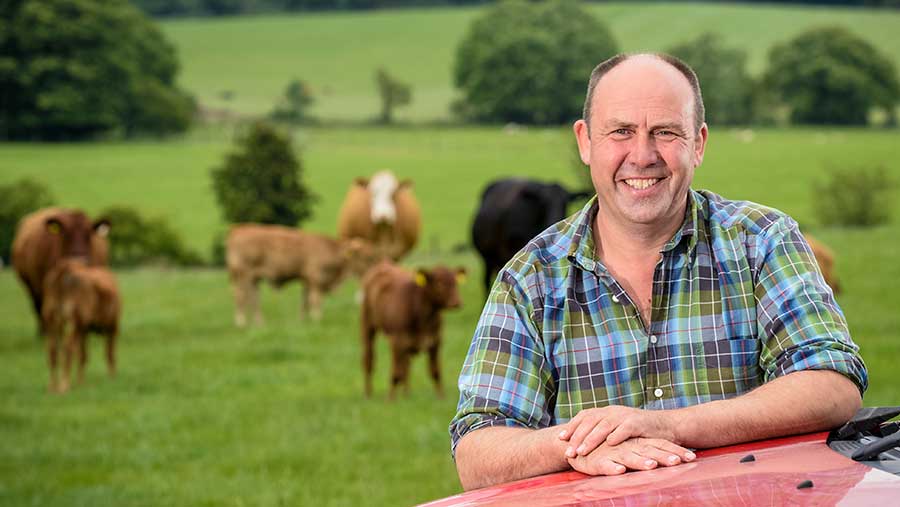Seven factors for a profitable beef enterprise
 © Jim Varney
© Jim Varney A blend of breeding for maternal attributes and hitting key productivity goals will drive beef farming towards a profitable future.
This is the latest thinking on beef production from delegates at this week’s British Cattle Breeding conference.
Breeding for specialist beef cows is key to efficient and profitable suckler production, said northern Irish beef farmer Billy O’Kane.
See also: How to hit the top weaning weights
“We need specialists, not accidents,” he said. “Farm profit will be massively improved by using specialist maternal genetics.
“We need cows that are fertile, easily calved, easily fleshed, adequately milky, preferably polled, under 650kg and able to wean over 50% of their own weight and they are all the better for having hybrid vigour.”
The single biggest profit driver in suckler beef is kg of calves weaned/ha with factors dictating how efficiently those cows perform, said Mr O’Kane.
BCBC’s seven key factors for a profitable beef enterprise:
- Fertility – Short calving intervals allowing cows to produce one calf/year.
- Cow efficiency – Bigger, heavier cows do not necessarily wean bigger calves. Cow efficiency is calculated as kg of calves weaned at 200 days/ (divided by) total of kg of cows put to the bull. US economists target 50%. This is much easier to achieve with smaller cows of below 650kg.
- Two-year-old calving – Calving at two years old rather than three has been shown to increase net profit by 40% every year of a cow’s life.
- Net feed efficiency – Feed efficiency helps profitability in the feedlot and the suckler herd. US trials have shown harnessing NFE will save £100/cow-calf unit each year.
- Hybrid vigour – Studies have shown a four-cross hybrid can wean 23% more calf weight in its life than its purebred grandparents.
- Cow size – Numerous sources show that smaller cows wean the same weight of calves but give you more cows/ha.
- Milk yield – Milky cows can wean heavy calves but need adequate grazing to do so. Farms must match milk yield to a holding’s nutritional potential.
